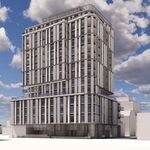Wood for Wings: Building with nature's composite
By Mike DiFrisco (originally published in EAA Sport Aviation, May 2000)
When people who are not in the know hear that airplanes have wooden components, their first mental image is of a really old airplane. This is an unfair image. Although wood isn’t used much in today’s production airplanes, it’s still a common building material in many modern-and not-so-modern-homebuilts.
You can find wood structures in homebuilts from the ubiquitous Pietenpol Air Camper to the Fisher Flying Products fleet and the geodetic construction of the Loehle replicas. Even some composite airplanes-and many tube and rag designs-use wood for wing ribs and fuselage structures.
Lest you think that airplanes made of wood are only of the low and slow variety, picture the super-sleek, all-wood Sequoia Falco or the equally pleasing lines of the fast Osprey Aircraft GP-4. These wooden wonders boast performance figures that rival the latest composite speedsters.
So what makes wood so wonderful? Often called nature’s composite, wood may just be the perfect aircraft building material. It’s strong. Pound for pound, wood has twice the tensile strength of aluminum. You can form wood into complex shapes because it becomes pliable after applying copious amounts of hot water. Wood is easy to cut, which means you can build an airplane with common hand tools-saws, chisels, drills, and sandpaper -that most people already have in their shops. Wood is safe, because unlike composite materials, it’s nontoxic. Heck, wood even smells good, is aesthetic in its own right, and is satisfying to work with.
But like everything in this world, wood also has its drawbacks. Because it’s a natural material, stringent manufacturing tolerances do not exist. We have to take it as it comes. Aircraft-grade lumber must meet certain requirements to be categorized as such, but hidden flaws-pitch pockets, knots, and other vagaries of nature-might be waiting to bite the unsuspecting builder. And wood rots. Without proper protection from extreme temperature and humidity, wood will disintegrate. Finally, Sitka spruce, the most common aircraft-grade lumber, is becoming harder and more expensive to get. Most Sitka spruce comes from trees in British Columbia and Alaska that are a half-century old or more. As finding and felling these trees becomes more difficult, the price of aircraft-grade Sitka spruce increases (it’s doubled in the past five years). [...]








